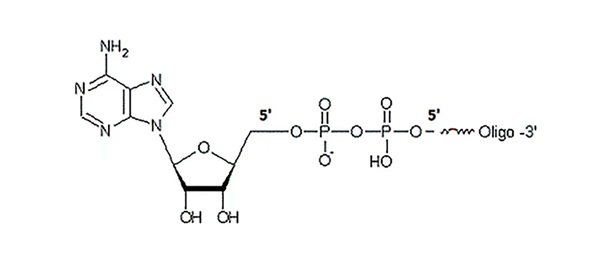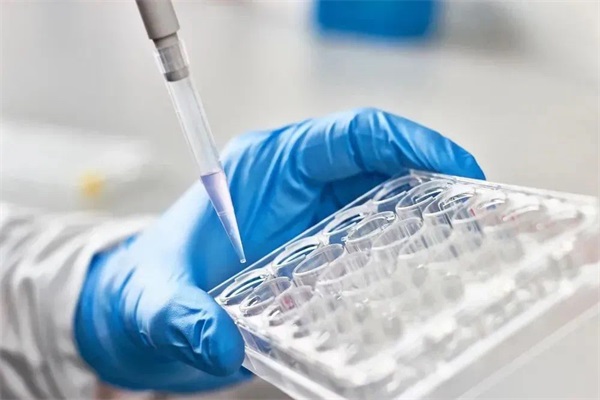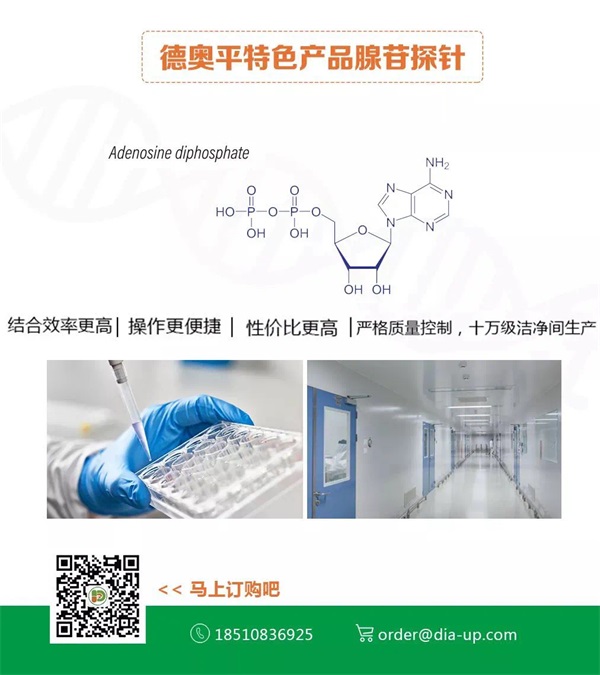
1、 Preparation of 5 '- rApp Modified Joint
Adenylation of the 5 'end of DNA/RNA oligonucleotides can be carried out through chemical methods or enzymatic methods. Taking adenosine acylase as an example, using 5 'phosphorylated single stranded DNA/RNA as a substrate, adenosine acylase decomposes ATP into AMP and PPi, and AMP is transferred to the 5' phosphate group of the single stranded DNA/RNA to form adenosine acylated single stranded DNA/RNA, thus preparing adenosine acylation junctions. In order to prevent the 5 '- terminal adenosine acylation (rApp) modified oligonucleotide connector from self connecting, it is necessary to add a blocking group at the 3' - terminal, such as 2 ', 3' - Dideoxynucleotide or 3 '- amino connector. The resulting 5 '- rApp oligonucleotide is stable and can be used for any connection based application.
2、 Application of 5 '- rApp Modified Connector
5 'end marker
Activated RNA rich in 5 '- pyrimidine
Activated nucleic acid substrate for ribose/deoxyribonuclease as in vitro selection
Expanding the range of RNA substrates that ribose/deoxyribonase can explore
Construction of second-generation sequencing/miRNA library
Many second-generation sequencing schemes for high-throughput small RNAs use 5 'pre adenylate DNA oligonucleotide connectors in the preparation of cDNA libraries. Connect the DNA oligonucleotide sequencing connector to an unknown RNA, allowing the RNA to be sequenced through its cDNA after reverse transcription. This method is particularly useful for small RNAs and other non polyadenylated RNAs. A key technological advance in this method is the use of pre formed 5 'adenosylated splices (AppDNA) to provide binding sites for Reverse transcriptase primers.
Connectors modified in this way represent separable substrate intermediates that can enter the multi-step reaction path of DNA and RNA Ligase before the formation of new Phosphodiester bond. The use of pre adenosylation connectors can liberate the connection reaction from ATP dependence, thereby avoiding ATP dependent cyclization and polymerization of RNA with a 5 'phosphorylated end. Due to the fact that many naturally occurring RNAs (such as pre miRNA, mature miRNA, and various RNA degradation products) carry 5 'phosphate groups, this advantage makes pre adenosylation sequencing connectors commonplace in small RNA sequencing applications.

Similarly, in the construction of miRNA library, the miRNA processed in vivo is very short (21-23nt), and has 5 '- phosphate and 3' - OH terminal groups. Therefore, it is difficult to build a high-quality miRNA library from cell RNA, because the use of T4 RNA Ligase and ATP to connect the connector to the end of miRNA will lead to a high level of miRNA self connection.
The use of 5 '- rApp modified connectors can avoid this issue. In the absence of ATP, first use Ligase to connect the 5 '- rApp modified connector to the 3' - OH end of the miRNA, and then connect the second connector to the 5 '- phosphate group end of the 5' -3 '- miRNA connector in the presence of ATP. In this way, the miRNA molecule in the miRNA library has suitable connectors at both ends, which can be cloned into suitable vectors for subsequent sequencing.
